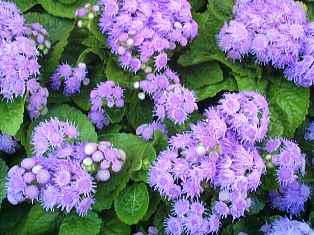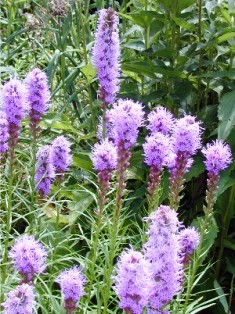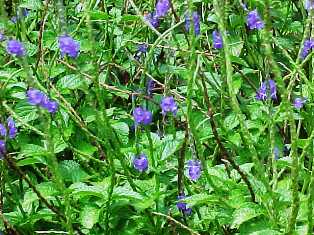Discover Florida Nature
It's time to explore the natural Florida


|
|
|
|
|
|
Who doesn't want to see beautiful butterflies visiting their Florida
garden?
Planning a butterfly garden in your yard helps attract a wide variety of
butterflies found in Florida nature. Creating a butterfly garden means
choosing plants that are high in nectar and plants in colors of red and
purple that butterflies find irresistible.
Plant larval foods. Many caterpillars, which metamorphose into butterflies, require require specific host plants for food. By selecting particular species, you can provide the basic habitat requirements for specific species that you'd like to see as adults. Since highly preferred hosts may be unattractive or eaten until they have few leaves, plan an out-of-the-way place for these hosts. You might also want to provide host plants for some of the more attractive moths. Plant species with nectar needed by adults. Butterflies are attracted by sweet, pungent, and acrid, smelling flowers that are orange, yellow, pink, purple and red. Plants with deep throated, drooping or enclosed flowers are unsuitable for nectar-gathering. Some of these, especially white flowers that are fragrant at night, may attract moths. Avoid pesticide use. Especially avoid use of Bacillus thuringensis, broad-spectrum insecticides, and any insecticide that is broadcast broadly in the environment. Browse through our alphabetical list of native Florida plants that will encourage butterflies into your garden, and find the perfect choices for your Florida butterfly garden! Plants that have an asterisk beside their name are especially high in nectar.  Ageratum
(Eupatorium spp. )*- Ageratum plants are covered with clusters
of small, fuzzy flowers. Most types are mounding plants six to ten
inches tall and wide, but there are taller types. Plants bloom from
spring planting until frost in fall. There are approximately 43 species
in the genus Ageratum. Ageratum is derived from the Greek "a geras,"
meaning non-aging, referring to the longevity of the flowers. These
annual or perennial herbs and shrubs in the plant family Compositae (Asteraceae)
are all native to Central and South America. The flowers on this tender
annual come mostly in shades of blue, but can be pink, lavender or
white. Ageratum is one of the few annuals with a truly blue flower. The
soft fuzzy flowers are dainty and feathery, often delightfully fragrant,
and usually completely cover the plants. Each flower cluster consists of
five to 15 tubular florets. The species grows to a height of over two
feet and reseeds itself liberally. The varieties offered by nurseries
and garden centers are almost all hybrids that are more compact and
better behaved. Ageratum grows in neat mounds, flowering from
late spring through fall, and is one of the more dependable flowering
annuals. The oval to heart shaped leaves grow up to 2" long. Ageratum
(Eupatorium spp. )*- Ageratum plants are covered with clusters
of small, fuzzy flowers. Most types are mounding plants six to ten
inches tall and wide, but there are taller types. Plants bloom from
spring planting until frost in fall. There are approximately 43 species
in the genus Ageratum. Ageratum is derived from the Greek "a geras,"
meaning non-aging, referring to the longevity of the flowers. These
annual or perennial herbs and shrubs in the plant family Compositae (Asteraceae)
are all native to Central and South America. The flowers on this tender
annual come mostly in shades of blue, but can be pink, lavender or
white. Ageratum is one of the few annuals with a truly blue flower. The
soft fuzzy flowers are dainty and feathery, often delightfully fragrant,
and usually completely cover the plants. Each flower cluster consists of
five to 15 tubular florets. The species grows to a height of over two
feet and reseeds itself liberally. The varieties offered by nurseries
and garden centers are almost all hybrids that are more compact and
better behaved. Ageratum grows in neat mounds, flowering from
late spring through fall, and is one of the more dependable flowering
annuals. The oval to heart shaped leaves grow up to 2" long.  Blazing
star (Liatris spp. )- Fine grass-like, bright green leaves
arise from a basal tuft which becomes longer in summer, giving rise to
18 to 28 inch tall spikes of fragrant, fringed, mauve-purple or white
flowers, which begin in midsummer and continues until fall. Flowers open
from the top of the stalk down. A native to eastern and central United
States, the blazing star is a native plant in most open areas of North
America east of the Mississippi; Canada to Florida and Mexico. These
plants do well in poor soil, and withstand heat, cold and even drought.
Blazing stars also make a wonderful cut flower, lending strong vertical
accent to any arrangement. The blazing star is a perennial, and returns
each spring from same roots, forming expanding clump. Blazing Star
blooms the second spring from seed. This valued perennial takes some
time. From seed, it is quite easy, as long as its native conditions of
gritty, loose soil is there. If soil is heavy, it will take longer,
since a bulbous root must develop. Blazing
star (Liatris spp. )- Fine grass-like, bright green leaves
arise from a basal tuft which becomes longer in summer, giving rise to
18 to 28 inch tall spikes of fragrant, fringed, mauve-purple or white
flowers, which begin in midsummer and continues until fall. Flowers open
from the top of the stalk down. A native to eastern and central United
States, the blazing star is a native plant in most open areas of North
America east of the Mississippi; Canada to Florida and Mexico. These
plants do well in poor soil, and withstand heat, cold and even drought.
Blazing stars also make a wonderful cut flower, lending strong vertical
accent to any arrangement. The blazing star is a perennial, and returns
each spring from same roots, forming expanding clump. Blazing Star
blooms the second spring from seed. This valued perennial takes some
time. From seed, it is quite easy, as long as its native conditions of
gritty, loose soil is there. If soil is heavy, it will take longer,
since a bulbous root must develop. Blue
porterweed (Stachytarpheta spp. )*- The genus
Stachytarpheta is comprised of 65 species of annual herbs or low,
perennial shrubs, and are highly regarded as butterfly attractors. In
the tropical Americas, they attract
hummingbirds as well. It is for this very reason why many species
have found their way into cultivation in tropical and warm temperate
regions of the world. Throughout the Caribbean, and in Florida, these
plants are commonly called Blue
porterweed (Stachytarpheta spp. )*- The genus
Stachytarpheta is comprised of 65 species of annual herbs or low,
perennial shrubs, and are highly regarded as butterfly attractors. In
the tropical Americas, they attract
hummingbirds as well. It is for this very reason why many species
have found their way into cultivation in tropical and warm temperate
regions of the world. Throughout the Caribbean, and in Florida, these
plants are commonly called porterweedsin reference to the medicinal properties bestowed upon them. A foaming, porter-like brew, much like beer, is made from at least one species in the Bahamas. This concoction is used as a drink for fever, for "the cooling of the blood," as a wash for skin irritations, to relieve constipation and for worms in children. Whether it works or not is open to conjecture. Other local names include "snakeweed," "rat's tail" and "vervain." The generic name is taken from the Greek stachys, meaning "spike," and tarphys, meaning "thick," referring to the thickened flower spike typical of the genus. |
|
|
Advertise | Privacy Statement | Contact | Alaska Nature | Michael Arnold Art| Dog Encyclopedia | Dog Encyclopedia| |
|